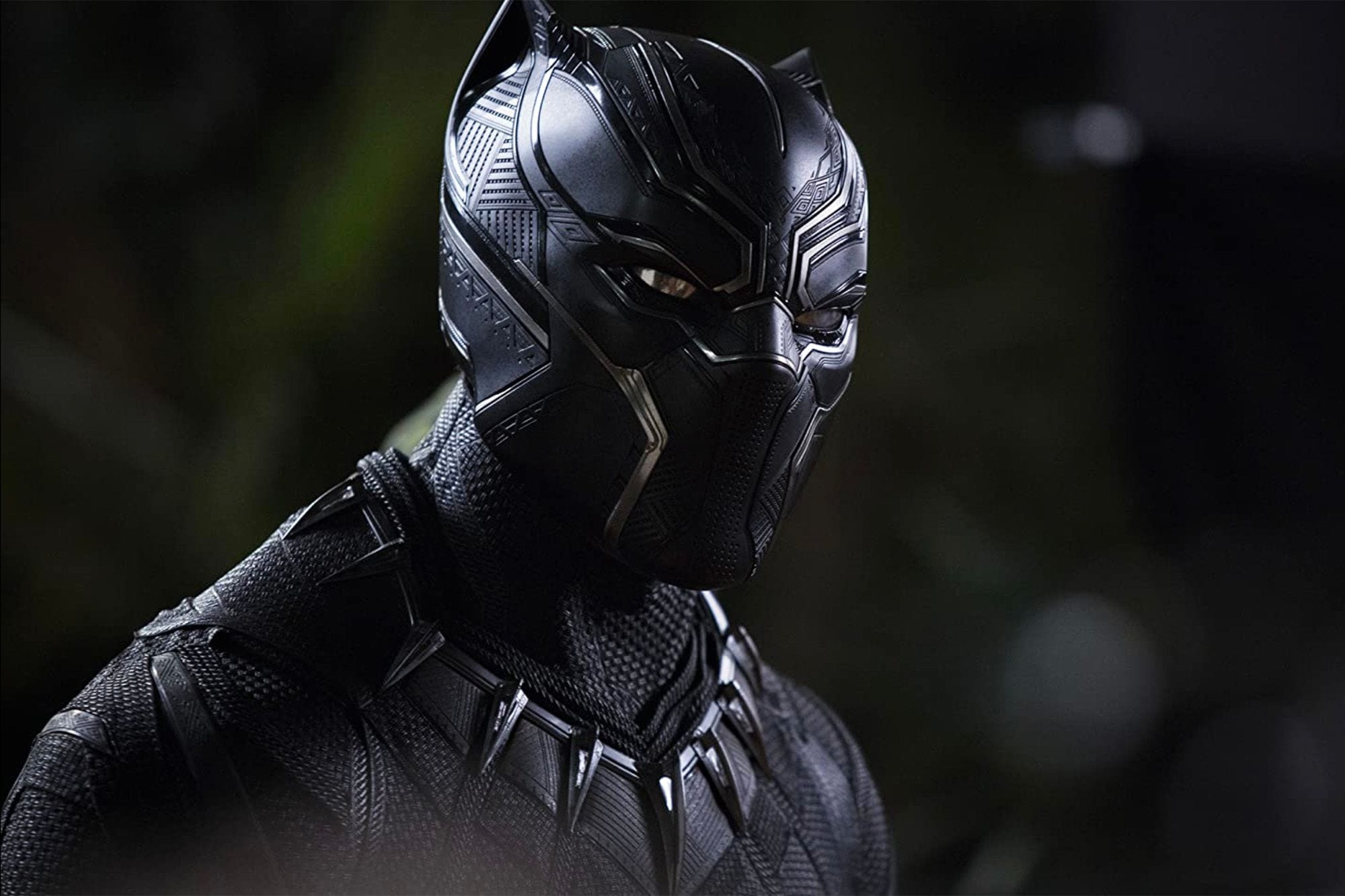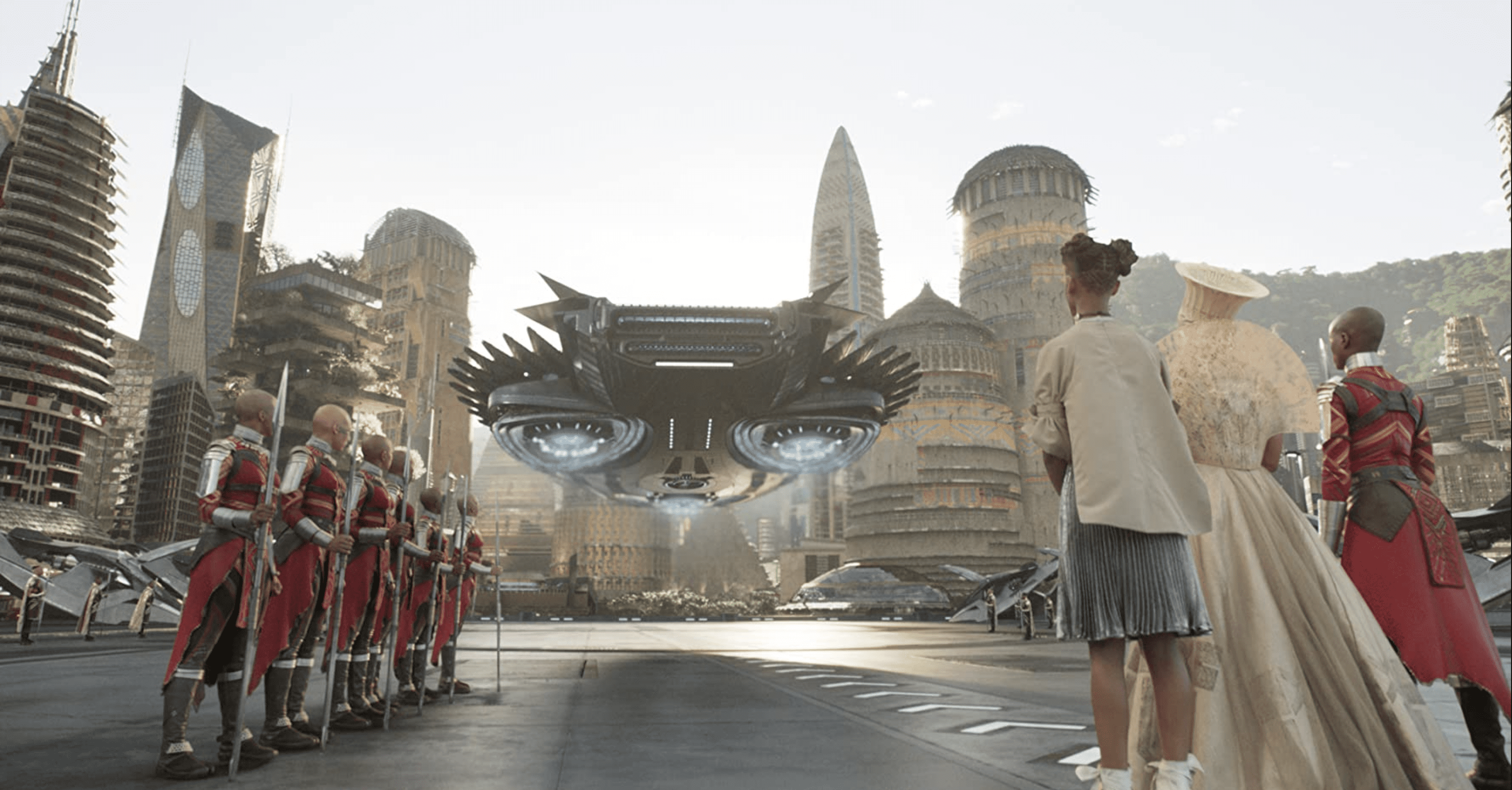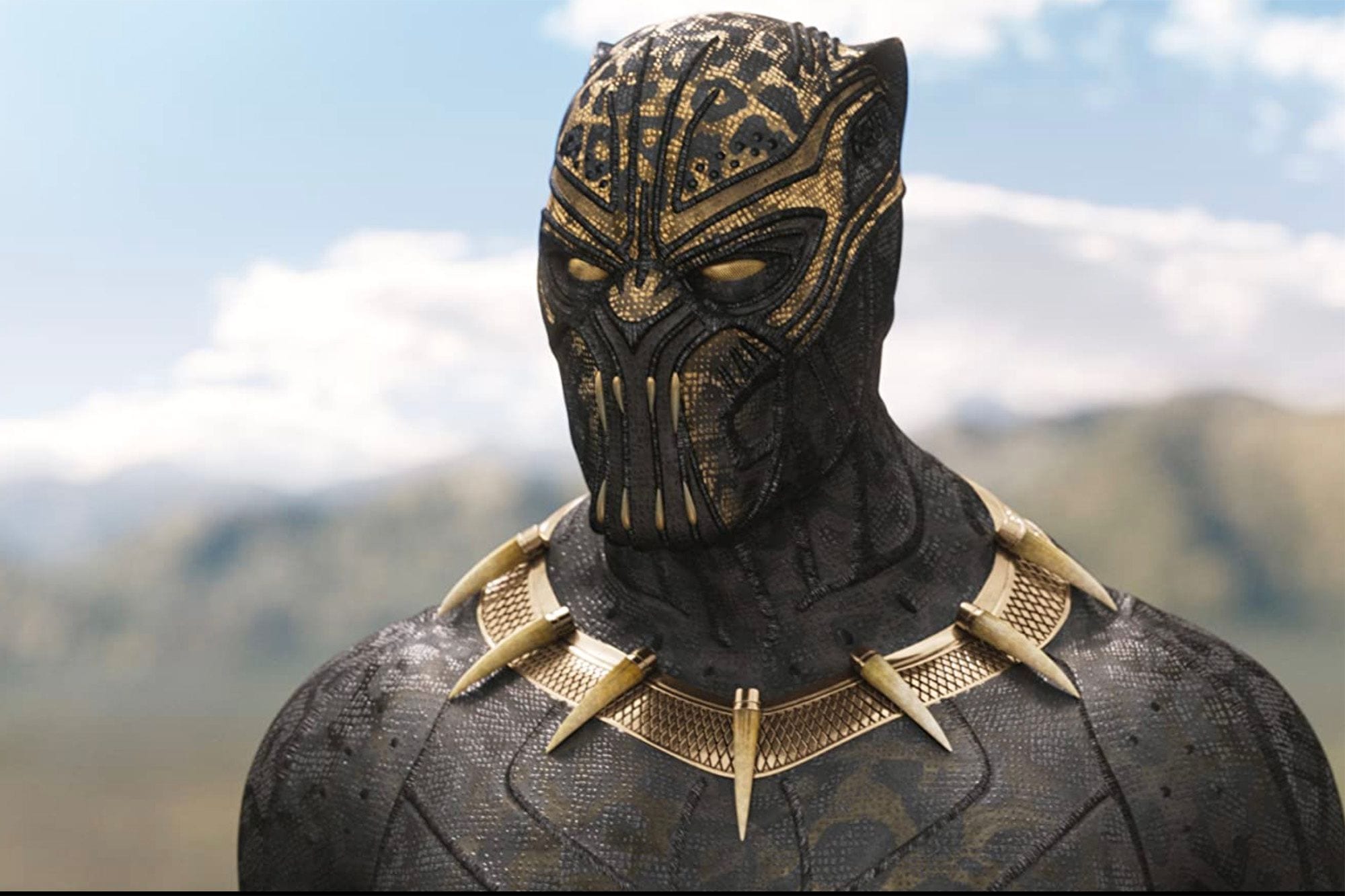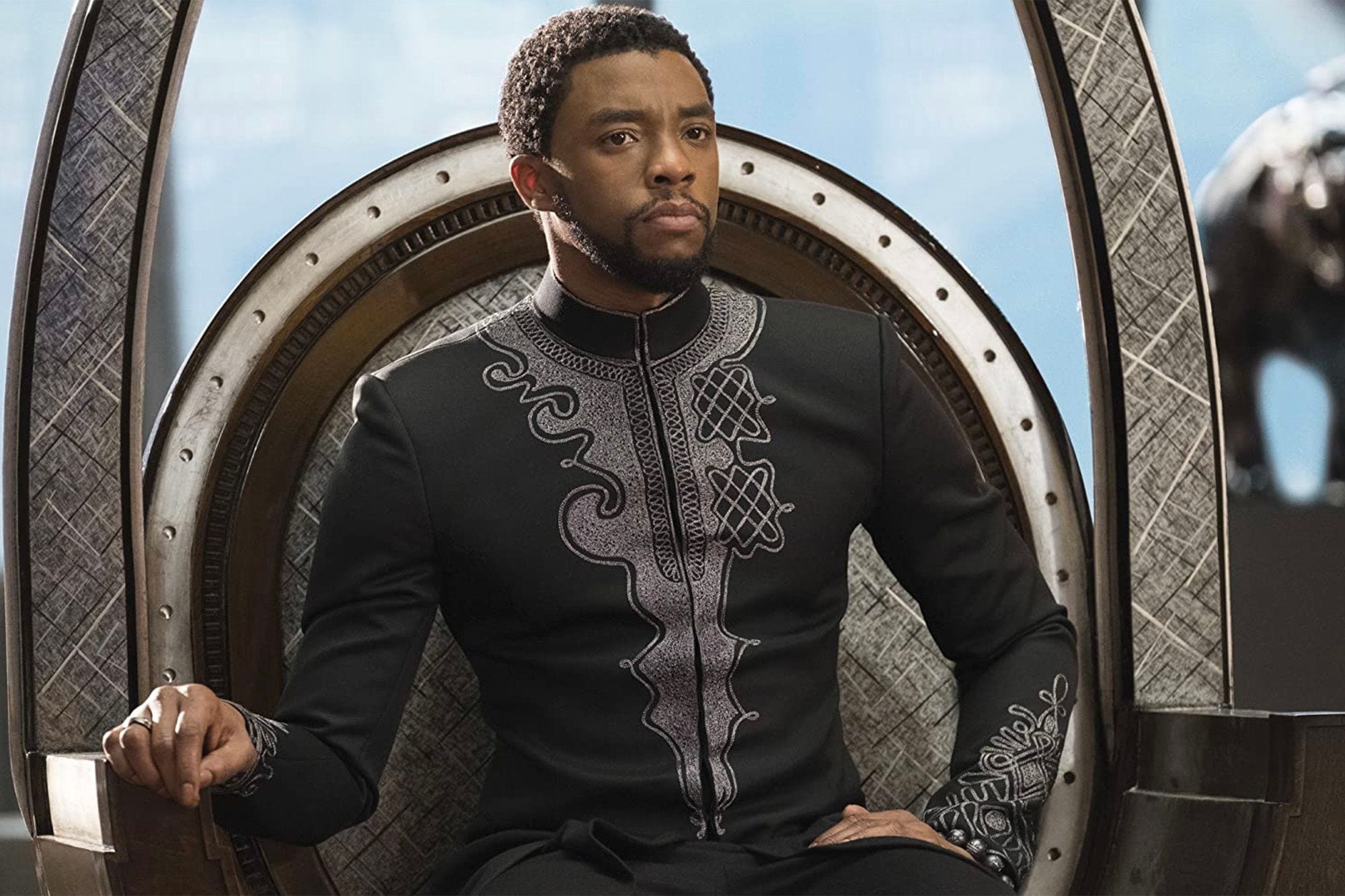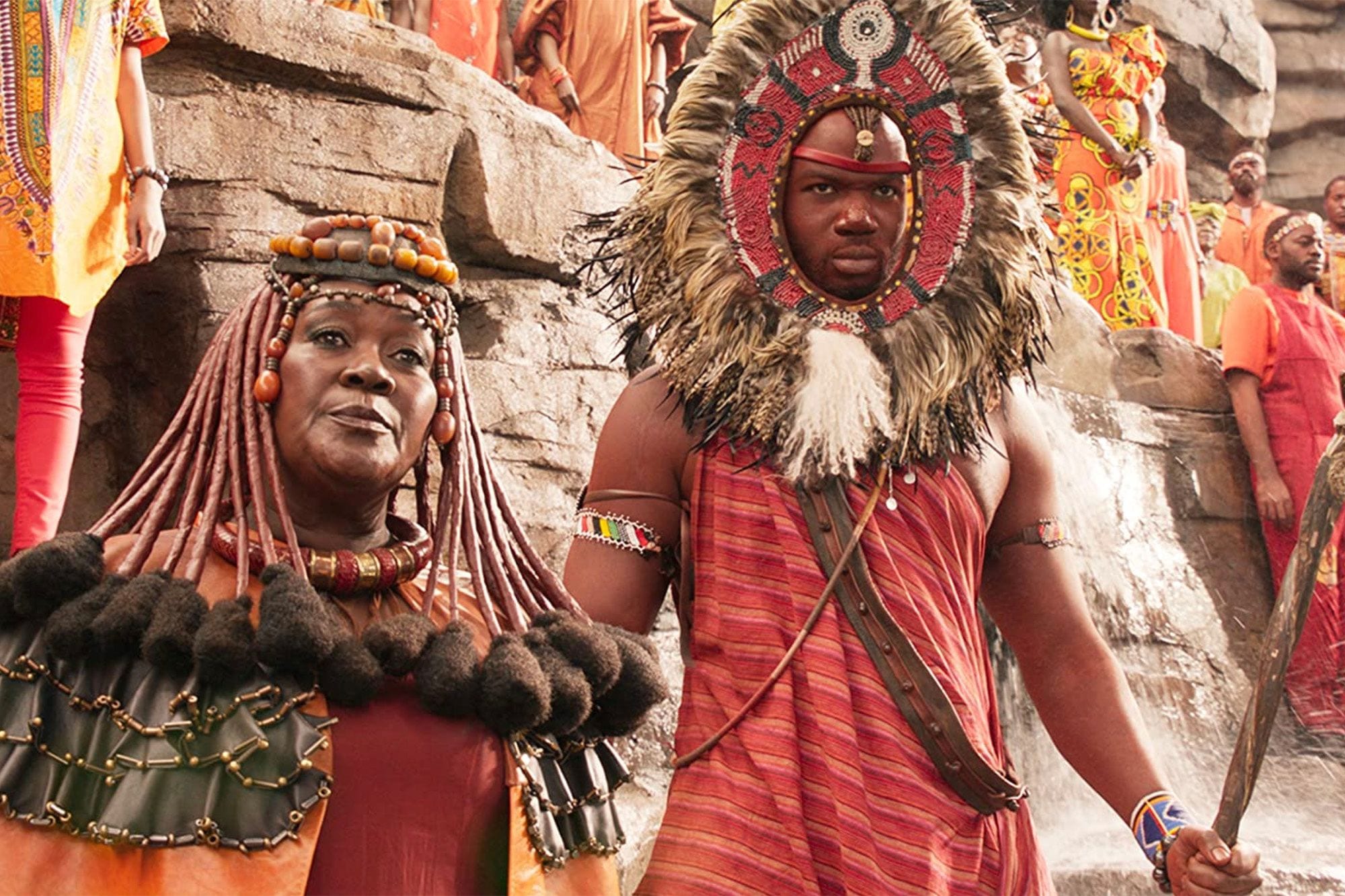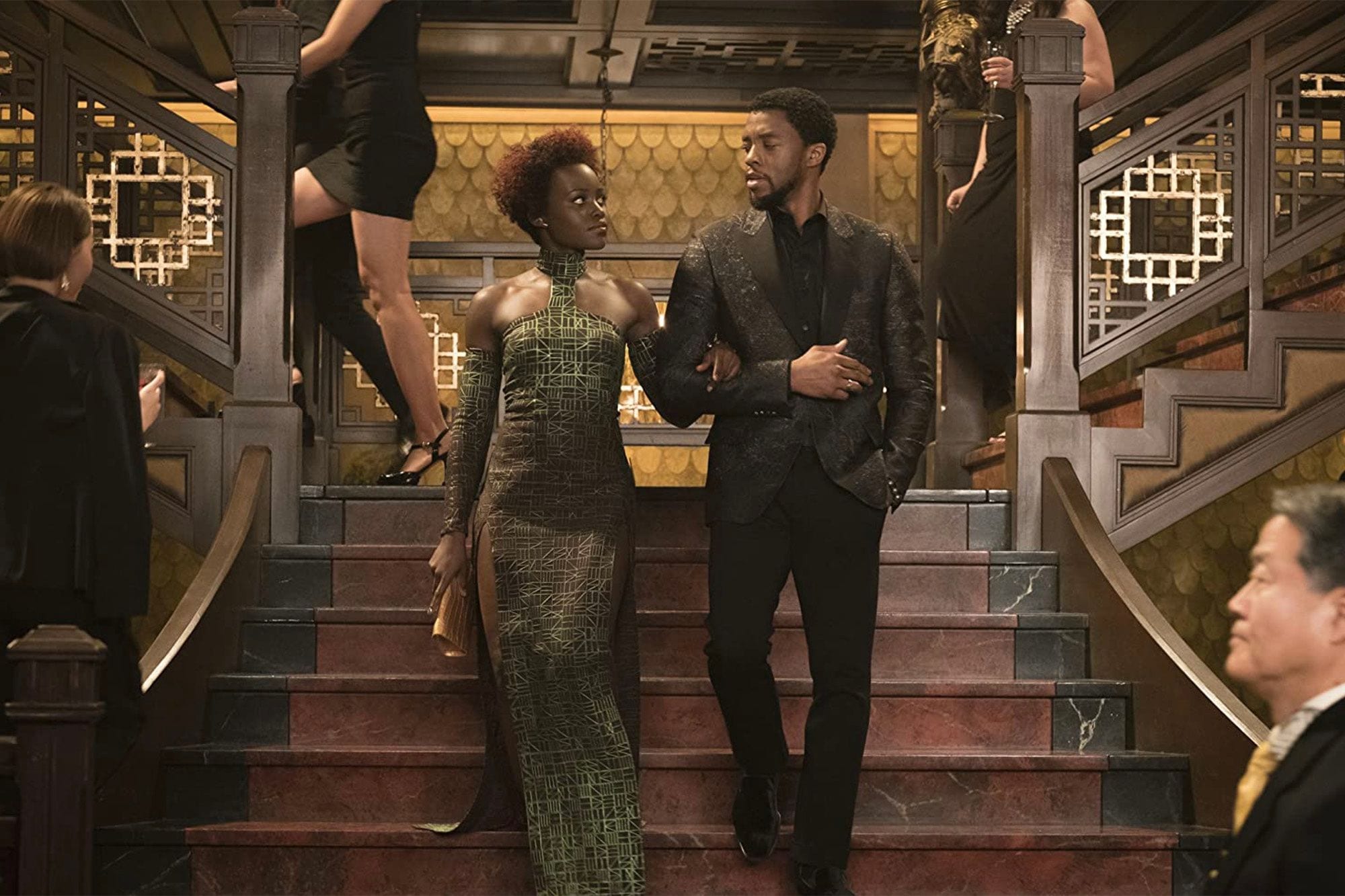The year 2018 was an enormous one for Marvel Films. Comic book films were increasingly dominant in blockbuster cinema during the first two decades of the century. Marvel Films led this charge in the ’10s, particularly after Marvel Studios successfully integrated multiple superhero film series into the shared Marvel Cinematic Universe (MCU) with Joss Whedon’s The Avengers (2012). Even taking into account all of the benchmark films leading up to 2018, and the continued success of Marvel Films after 2018, it’s hard not to view this year as the high-water mark. Six films based on Marvel Comics properties were released in 2018, more than any previous year. All six films enjoyed some combination of commercial success or critical acclaim.
The films averaged $386 million at the North American box office, and just over $1 billion at the worldwide box office. Four of the top ten highest-grossing films of 2018 were Marvel Films. The lowest-grossing Marvel Film of 2018, Spider-Man: Into the Spider-Verse (Persichetti, Ramsey, Rothman, 2018), was a critical darling and won an Academy Award for Best Animated Feature. The worst-reviewed Marvel Film of 2018, Venom (Fleischer, 2018), was an unexpectedly big box office hit. The highest-grossing of these films worldwide, Avengers: Infinity War (Russo Brothers, 2018), was a bold, instantly-iconic cinematic event.
Yes, it was a remarkable year for Marvel Films, and all six made an impact. Arguably the most impactful, however, is the subject of this article, the first Marvel Film of 2018. It was the most acclaimed of the films, the highest-grossing film of the year in North America, a genuine phenomenon, and possibly the most culturally important Marvel Film ever made: Ryan Coogler’s Black Panther.
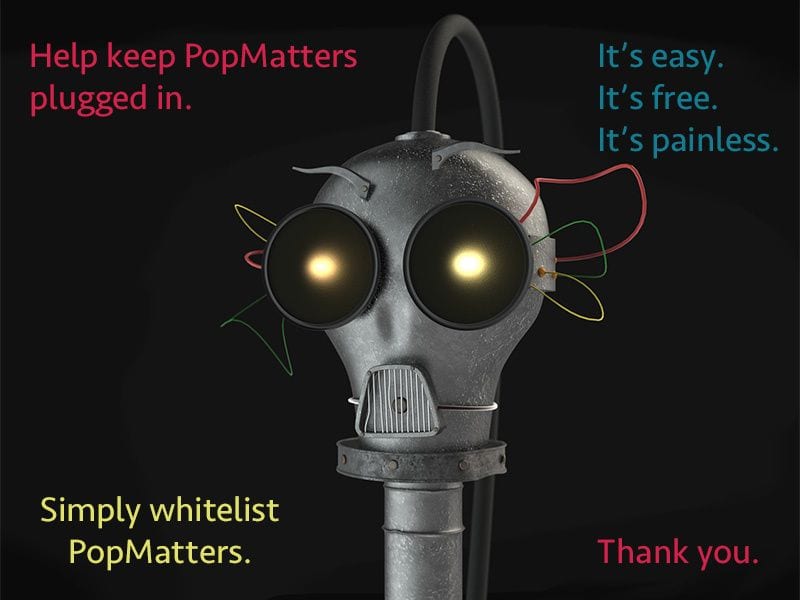
Black Panther is a special film for me as a film essayist and critic because it was the first film for which I published a contemporary review. My articles are typically retrospectives, written years after release with a clear understanding of a film’s cultural context. My original Black Panther article attempted to contextualize the film mere days after its release, when its full success, failure or impact was impossible to gauge. At the time I was not aware of the level of critical, commercial, or cultural success the film would achieve, the landmark it would become.
Black Panther is the third film, after Avatar (Cameron, 2009) and Star Wars: The Force Awakens (Abrams, 2015), to gross over $700 million at the North American box office, and nearly sold as many tickets as The Avengers. The soundtrack, curated by Kendrick Lamar, was a huge sales success and spawned multiple top-ten hit singles. Black Panther was nominated for seven Academy Awards, becoming the first superhero film to receive a Best Picture nomination. It proceeded to win three Academy Awards, for the Score, Costume Design and Production Design.
In general, these and other awards honoured and legitimized the superhero film genre. Specifically, they rewarded Black Panther for engaging with deep and timely social, cultural and psychological concepts in a comic book-based action-adventure blockbuster. Much of the film’s enormous success resulted from tapping into the cultural zeitgeist of America so completely, speaking sharply and directly to the struggles and dreams of the African-American community. All I knew at the time was that the film felt distinctive in the superhero genre. Now, with the benefit of hindsight, the importance of Black Panther is clear.
(© 2017 – Disney/Marvel Studios / IMDB)
T’Challa/Black Panther, created by Stan Lee and Jack Kirby, first appeared in
Fantastic Four #52-53 (July-August 1966). The character’s introductory story occurred immediately after the classic “Galactus Trilogy” (Fantastic Four #48-50) and the well-regarded “This Man, This Monster” (Fantastic Four #51). This run of issues is generally regarded as the creative highpoint of Lee and Kirby’s celebrated time on Fantastic Four, immediately giving Black Panther a strong pedigree. The character is widely considered the first black superhero in mainstream American comics, and he became a regular presence throughout Marvel Comics. After guest-starring in Fantastic Four and Tales of Suspense (alongside Captain America), T’Challa joined the Avengers for an extended period.
The character’s first starring feature was in the pages of Don McGregor’s
Jungle Action #6-24, from 1973-1976. Although retroactively praised for its tight storytelling and expansion of T’Challa’s world, introducing characters and concepts that have become central to the character, the series was very low selling at the time. Despite this, Marvel immediately launched the first Black Panther solo series in 1977, capitalizing on the return of Jack Kirby to Marvel after a stint at DC Comics. The series was cancelled after 15 issues, however, and the character was relegated to mini-series and guest appearances for almost 20 years.
T’Challa is the ruler of Wakanda, a highly advanced fictional African nation untouched by European colonization. T’Challa became King, and earned the mantle of Black Panther as a child, when his father was killed by Ulysses Klaw, a thief attempting to steal Wakanda’s precious vibranium metal. This offered a unique opportunity for creators to explore the struggles of a character who is both a superhero and a world leader, someone who is not free to act unilaterally because he is beholden to his people. Previously, superpowered leaders were depicted as alternatively hero and villain (Namor) or straight up villain (Dr. Doom). Aesthetically, the Black Panther stories uniquely combine a fictionalized traditional African culture with the futuristic technology created in Wakanda. Black Panther stories also allowed writers to examine African-American social issues from the perspective of a purely African hero, untouched by the wounds of European or American colonialism.
In 1998, Marvel Comics launched the Marvel Knights imprint, using it to tell more mature superhero stories. The initial Marvel Knights titles were a new ongoing volume of
Daredevil, a year-long Inhumans story, and a new Black Panther ongoing series written by Christopher Priest and drawn by Max Texeira. The series was immediately recognized as the quintessential take on the character, tying together three decades of comics history with twisty, international stories. Priest also created the character of Everett Ross, a bumbling State Department official who becomes T’Challa’s American liaison. The early years of the series were seen through Ross’ eyes, in an attempt by Priest to make the complex, Afro-centric mythology more relatable to Marvel’s predominantly white readers. Whether or not that compromise was necessary, the series was a success.
Reginald Hudlin, the next major writer of the series, saw no need to continue Priest’s approach. Starting in 2005, Hudlin wrote Black Panther for a distinctly African-American audience, directly addressing African and African-American issues in the series. At that point, Black Panther was not the only black Marvel superhero, but he certainly still had the highest-profile. Marvel recognized the importance of doing Black Panther justice.
Recent years have been kind to the character. He factored heavily into Jonathan Hickman’s epic Avengers run from 2012 to 2015. A new ongoing series was launched in 2016 written by Ta-Nehisi Coates. Coates, known for his non-fiction cultural and political writings, was a surprising and high-profile choice to write a monthly superhero comic. The run has been a smash success, and is lauded for its highly intelligent, philosophical and political approach. This, combined with the massive success of the film, have established T’Challa as one of the leading characters in Marvel Comics.
A film adaptation of Black Panther was a years-long passion project of Wesley Snipes, star of the first major Marvel Film, Blade (Norrington, 1998). He discussed it regularly in interviews from 1992 to around 2009, during which time he starred in a trilogy of Blade films. In 1992, when Snipes was at the peak of his stardom, he announced his intention to counter negative African cinematic stereotypes with a big-budget Black Panther film. Stan Lee became involved, and screenplays were commissioned but they never entered production. In May 2000, Marvel sold the film rights of many of their characters, including Black Panther, to Artisan Entertainment.
Snipes claimed to still be attached to the property, but nothing came of it by the time Artisan went out of business and the rights reverted back to Marvel. At this point, in 2005, Marvel Studios was planning to produce their own slate of Marvel Films, including Black Panther. Snipes was still discussing the film, whether he was coordinating with Marvel or not, right up until he ran into legal trouble in the late-’00s. Marvel moved forward with the property, and Snipes was not involved as his passion project came to fruition.
Michael B. Jordan as Erik Killmonger (© 2017 – Disney/Marvel Studios / IMDB)
In 2009, Marvel Studios began the Marvel Writers Program for young writers to develop lesser-known properties into films.Guardians of the Galaxy (Gunn, 2014) is the first example of a successful film generated from the program, but Black Panther was also a priority. Producer Nate Moore became involved at this point, and shepherded the project to the screen. Marvel indicated its commitment to Black Panther by layering “easter eggs” into MCU films at the time. Iron Man 2 (Favreau, 2010) depicts Wakanda on a map, Captain America: The First Avenger (Johnston, 2011) introduces vibranium in the Captain’s shield, and Avengers: Age of Ultron (Whedon, 2015) makes the explicit connection between Wakanda, vibranium, and the seedy arms dealer Ulysses Klaue (Andy Serkis). Each of these teased the long-ruminating first appearance of Black Panther.
In October 2014, Marvel announced a huge slate of upcoming films including Black Panther, as well as the character’s first appearance in Captain America: Civil War (Russo Brothers, 2016). Over the course of 2015, Marvel met with several high-profile filmmakers about the film, notably Ana DuVernay, before ultimately hiring Ryan Coogler to write and direct in January 2016.
Coogler was fresh off his stunning first two films. Fruitvale Station (2013) is based on the final day of a young man who was murdered by a police officer in Oakland in 2009. Creed (2015) is the seventh film in the Rocky film series, about the illegitimate son of Rocky’s old frenemy becoming a boxer, that we did not know we needed until Coogler made it. Both films starred Michael B. Jordan, and told grounded, modern and emotionally-authentic stories about the black experience in the United States.
Coogler aimed for a similar approach in Black Panther, making the film personal and adding a socially conscious perspective on race in America despite the film largely taking place in Wakanda. Less interesting filmmakers would have treated this like any other superhero film, with only the setting and characters adding a unique flavour. Coogler instead took the opportunity to embed a deeper commentary in his action blockbuster and that, more than anything else, sets Black Panther apart.
Coogler’s influence didn’t end there. He hired collaborators from Fruitvale Station and Creed, much more grounded, smaller-scale films, to work on Black Panther, giving it a distinctive style compared to the rest of the MCU. Among others, he hired cinematographer Rachel Morrison, production designer Hannah Beachler and composer Ludwig Göransson. The latter two would win Academy Awards for their work. Coogler and his team made trips to Africa to gain inspiration from the sights, sounds and feel of the real cultures there, allowing them to base their unique designs for Wakanda on real African culture. Each of the five tribes of Wakanda are inspired by various real sub-Saharan tribes. This African aesthetic would be combined with futuristic technology to achieve an afrofuturist look for Black Panther.
Coogler was inspired by the serious, political tone of Captain America: The Winter Soldier (Russo Brothers, 2014), the operatic family drama of The Godfather (Coppola, 1972), and the espionage adventure of the James Bond series. In terms of casting, Coogler hired an incredibly talented, majority black cast for the film. It’s packed with a deep roster of fantastic actors, with only two significant supporting roles for white men. It could have been assumed that a film set in a fictional African nation would star mostly black actors, but this is such a rarity in blockbuster films that I needed to draw attention to it.
Chadwick Boseman as T’Challa / Black Panther in Black Panther (2018) (© 2017 – Disney/Marvel Studios / IMDB)
Ultimately, Black Panther has much more in common with the fantasy world-building and royal intrigue of Game of Thrones than the other superhero films in the MCU, albeit with a welcome splash of some Bond-style action. It combines these influences against an afrofuturist aesthetic, making for an exciting, unique superhero film. What elevates it to a higher level is the social consciousness and politics that Coogler layers under the surface. This is an action-packed blockbuster that addresses the lingering wounds of European colonialism in Africa, African slavery, and the modern plight of the black population all over the world.
Indeed, through Ryan Coogler, Black Panther became more than just popcorn escapism. He used the genre to interrogate real issues in our global society. That is why Black Panther is not just great, but important. Addressing these issues through the medium of the most popular cinematic genre of the time also makes Black Panther the perfect cultural time-capsule of 2018, a film that can be returned to in future decades to examine both the dominant pop culture trends and the important social issues of that time.
Before diving into the film, it’s notable that it took a full decade, and 18 films, for a non-white superhero to headline a film in the massively successful Marvel Cinematic Universe. This is unacceptable, but it’s also a complex issue. In part, the delay is a product of a more general lack of non-white representation in Hollywood blockbusters and in comics. Blockbusters tend to emulate (recycle) the films that inspired them, which perpetuates the overwhelming whiteness of those earlier films. Comic book films typically adapt long-running, successful comic book properties, most of which were created decades ago and featured predominantly white characters. So a lack of representation in other blockbusters and in the source material were two factors working against a film like Black Panther. This is compounded by risk-averse studio executives, who believed that the lack of non-white or female-led blockbusters is proof that there is no appetite for them.
The most charitable interpretation of Black Panther’s late debut in the MCU is that the delay was strategic. By waiting until the MCU was the dominant force in blockbuster films and a trusted brand for audiences, Marvel had the power to introduce more diverse heroes with a guaranteed audience and without studio interference. This interpretation is easy to make in retrospect, after Black Panther achieved so much success. Without the powerful backing of Marvel Studios, at the height of its power, would Black Panther be the biggest film in North America in 2018? Would it have made over $1 billion worldwide and been nominated for seven Academy Awards? Would it have been a cultural phenomenon, exposing an enormous audience to a rich, socially-conscious afrofuturist vision, if Marvel had released it earlier? Would a young, talented, interesting filmmaker of Coogler’s caliber have been hired to bring this vision to the screen in an earlier incarnation, or would the studio have gone for a safer choice?
Landmark films such as Black Panther tap into the culture of their time, reflecting and molding it. It’s important to acknowledge how long it took for the MCU to debut a non-white lead character. That said, the timing meant that Black Panther was a stunningly-made megablockbuster, and served as a positive step forward in the genre. Hopefully its success opens the door to more diverse representation in future blockbusters.
Black Panther opens with a voiceover of N’Jobu (Sterling K. Brown) telling his young son, Erik (Seth Carr), the history of Wakanda. Long ago, a meteorite the size of a mountain composed of vibranium, a powerful rare metal, landed in central Africa. Five tribes warred over that area until the first Black Panther united them under his rule. Since then, the king has eaten the rare heart-shaped herb that grows in Wakanda to gain increased strength and agility. The nation prospered due to the scientific advancements made possible by vibranium, and they kept their advancements secret from the world. As Western colonialists and slavers destroyed many Aftrican cultures around them and the world was beset by destructive national conflicts, Wakanda remained isolated and flourished in secret.
N’Jobu and Erik live in Oakland, California in 1992. This was Coogler’s hometown when he was about seven years old. At that time, the tape of Rodney King being beaten by police officers had surfaced. The ensuing trial failed to sufficiently punish the perpetrators, and racial tensions in the area were at an all-time high. By rooting a key element of the film’s backstory in this place and time, Coogler managed to make the film personal, and open the door to address real racial injustices in America.
Black Panther could have been entirely set in a fictional utopian African nation and not addressed any social realities, but Coogler boldly dives into real issues. N’Jobu is working as a “war dog”, a Wakandan spy in the outside world, and has become engaged in the racial conflicts rather than remaining an observer. He receives a visit from King T’Chaka (Atandwa Kani), his brother, who accuses N’Jobu of helping a mercenary arms-dealer, Ulysses Klaue, destructively raid and pillage Wakanda. The full Oakland story is told later, but Erik watches T’Chaka’s Wakandan airship flies away.
Cut to 2016, after the release of Captain America: Civil War. In that film, T’Chaka (John Kani) is murdered by a terrorist bomb while addressing the United Nations in Vienna. His son, T’Challa (Chadwick Boseman), previously took on the mantle of Black Panther, but now he will become king. On his way home to Wakanda, T’Challa and the leader of his royal bodyguards, Okoye (Danai Gurira), divert to an unspecified African country to extract Nakia (Lupita Nyong’o), a war dog, from her current mission. They save a group of women from a team of armed kidnappers. The brief action scene demonstrates T’Challa, Okoye and Nakia’s fighting skills, their advanced technology (such as beads that shut down the kidnappers’ trucks), T’Challa’s bulletproof Panther suit and, above all, the secrecy they maintain. The attack is at night, and the rescued women are sworn to secrecy. Wakanda may help people sometimes, but only ever in secret.
They arrive in Wakanda, where the central city is hidden behind a holographic image of jungle. T’Challa greets his brilliant inventor sister, Shuri (Letitia Wright), and his mother, Ramonda (Angela Bassett), before the coronation ritual. Representatives of each tribe gather on a cliff behind a waterfall. T’Challa drinks an elixir, given to him by Zuri (Forest Whitaker), that strips away his special powers, allowing a member of any tribe or the royal family to challenge him for the crown. There is a compelling fairness to this ritual, an understanding that the next in royal succession will not automatically be the best leader. Most do not challenge T’Challa, but the Jabari, the isolated mountain tribe, make a surprise appearance.
Connie Chiume as the Mining Tribe Elder (© 2017 – Disney/Marvel Studios / IMDB)
Their leader, M’Baku (Winston Duke), criticizes the traditional attitudes of the royal family that has pushed the Jabari to the fringes of Wakanda. M’Baku fights T’Challa, but the crowd is united behind T’Challa. He is clearly well-liked. When T’Challa defeats M’Baku, he refuses to kill him and rob the Jabari of a strong leader. He is wise and merciful. T’Challa officially emerges as the new king of Wakanda. In a later ceremony, T’Challa is fed the heart-shaped herb and buried in the earth to restore his Black Panther powers. The ritual sends him to the ancestral plain, a gorgeous African savannah with purple auroras in the sky, and he speaks with his father. T’Chaka is excited for him, but warns that it’s hard for a good man to be king. T’Challa will learn how hard surprisingly soon.
There is much to love about this first Wakandan section. First, the cast is impressive. Angela Bassett and Forest Whitaker, Academy Award nominee and winner, respectively, anchor a group of younger actors with more charisma and presence than the cast of The Avengers. Gurira, Nyong’o, Duke, and especially Wright are absolutely magnetic. This is before the film even properly introduces adult Erik (Michael B. Jordan), who swaggers through the film like the biggest star in the world. Boseman’s challenge as an actor is that his stoic, tranquil T’Challa is constantly in danger of being the least-interesting character in the film. It’s a credit to Boseman that his quietly powerful performance holds its own against such an onslaught of showy talent.

The design and world-building of Wakanda are also expertly achieved. The challenge facing any science fiction/fantasy world-building is making the fictional, fantastical world feel lived-in and genuine, at least according to its own internal logic. The design of Wakanda is a mixture of traditional and futuristic. Highly advanced planes feature interiors with intricate designs and wood textures. Skyscrapers in Wakanda’s central city have thatched roofs. The city’s market looks like an African bazaar, but with advanced technology on display. Later, one tribe’s traditional blanket clothes are revealed to create energy shields when positioned properly. Before the coronation ritual, boats approach the waterfall featuring tribes in traditional dress performing tribal dances. But then they emit pulses from their spears to activate an underwater system that blocks the waterfall for the ritual.
Every aspect of Wakanda feels rich, textured and grounded in African culture, while also being logically imbued with futuristic technology. This is a nation that has achieved technological marvels beyond the western world and has also escaped western influences. Their culture has remained intact for centuries while the technology has been incorporated. Coogler does all of this seamlessly, without drawing undue attention to any of it. Black Panther is not a story about this world, but a story set in this world.
As king, the main issue facing T’Challa is whether to open up Wakanda to the outside world. The nation survived and thrived over the centuries precisely because its advancements remained secret. Opening Wakanda’s borders to African refugees or exposing themselves to the larger world could help a lot of people, but could also dilute or threaten Wakanda’s culture. Nakia represents the faction pushing for global openness, while T’Challa’s friend W’Kabi (Daniel Kaluuya) pushes for traditional secrecy. This is how the film begins to address larger social issues. Should a prospering nation focus solely on its internal issues, or should it attempt to help the world? Is it morally right to allow suffering to occur while you mind your own business? Also, from a class perspective, do rich, prosperous people of African descent have a greater obligation to help less fortunate black people around the world? T’Challa is uncertain, but the debate is set aside as the James Bond-inspired section of the film begins.
N’Jobu’s son, Erik, and Klaue steal a vibranium artifact from a museum in London. The theft establishes that both characters are effective and ruthless. Klaue’s planned sale of the artifact in South Korea alerts Wakanda to his location, and T’Challa takes the opportunity to capture and punish Klaue for his raid on Wakanda in the early-’90s. That is the mission. Shuri acts as ‘Q’ to T’Challa’s ‘Bond’, and she takes him through her workshop of inventions. She upgrades the Black Panther suit to absorb and retransmit kinetic energy.
Okoye and Nakia accompany T’Challa to a casino in Seoul, where they discover Klaue selling the vibranium to CIA agent Everett Ross (Martin Freeman). From the gadgetry to the casino to the CIA involvement to the ensuing car chase through an exotic city, everything about this section is pure James Bond. The Wakandans and their advanced technology are incredibly effective against the more rudimentary weapons of Klaue’s men. This level of action and fun are expected from a superhero blockbuster. It’s larger-scale action than Coogler has previously directed, and he acquits himself well. Klaue is captured and taken into CIA custody. Erik breaks him out, and Ross is wounded saving Nakia. T’Challa takes him to Wakanda for treatment, and the film returns to the much more interesting family drama.
Erik is masked during the breakout, but T’Challa recognizes his royal ring. He asks Zuri about N’Jobu. N’Jobu had become radicalized by his time in America, seeing the suffering of Afican-Americans, and he wanted to use Wakandan technology to help. That is why he helped Klaue raid Wakanda. When T’Chaka ordered N’Jobu to return to Wakanda for justice, N’jobu lashed out and T’Chaka killed him. Even worse than killing his own brother, T’Chaka left Erik behind, alone. Knowing this, T’Challa realizes that his father, the last king, was not perfect, and that he must address the mistakes of the past. Erik is the embodiment of this mistake. He grew up an orphan in Oakland before joining the United States military. He became an expert at strategy and assassinations. In his mind, Erik holds the stories and perspectives of his father regarding Wakanda, and the experiences of a disenfranchised black man in America. Coogler envisioned Erik as the worst of both worlds.
Erik kills Klaue and his team, then brings Klaue’s body to Wakanda. Bringing an elusive enemy of the nation ingratiates Erik over T’Challa to some Wakandans. T’Challa knows Erik’s identity, and briefly attempts to keep it a secret but Erik loudly pronounces himself N’Jadaka, son of N’Jobu, a member of the royal family with a claim to the throne. He challenges T’Challa to combat, intending to take the throne and use Wakanda’s resources to help people of African descent around the world. In one scene, T’Challa’s whole world crumbles. His father’s dark secret, which he just learned, becomes public.
His throne is threatened by a betrayed family member who was able to kill an enemy that eluded T’Challa. T’Challa has struggled with how to follow his father’s legacy and with Wakanda’s place in the world, but his challenger is clear, focused. Erik hits every one of T’Challa’s weak spots, a perfect antagonist. In terms of performance, as previously mentioned, Michael B. Jordan nearly blows Boseman off the screen with Erik’s brash, cocky, uniquely American swagger. In the ensuing fight, Jordan is filmed from angles that accentuate his size and power over Boseman. T’Challa is stripped of his powers for another waterfall fight. He loses, Erik kills Zuri and throws T’Challa off the cliff, becoming king.
Lupita Nyong’o as Nakia and Chadwick Boseman as T’Challa / Black Panther (Amazon)
Erik then throws Wakandan traditions into chaos. First he takes the heart-shaped herb to gain Black Panther powers and visit his father on the ancestral plain. Unlike T’Chaka, N’Jobu does not reside on a beautiful savannah, but in the Oakland apartment where he was murdered. Erik toggles between his child and adult selves during their brief talk, which is filled with regret and Erik’s unresolved trauma. It’s a very different interaction than T’Challa and T’Chaka. Following that, Erik orders the heart-shaped herbs all burned, preventing any future kings or challengers from using them. He then enters the throne room in a dizzying shot that begins on Erik’s back, upside-down, then slowly turns 180 degrees as he approaches the throne.
Erik then lays bare his real plan: he will arm the war dogs in every country with Wakandan weaponry, and order them to lead uprisings to overthrow the governments of the world in Wakanda’s name. Like his father dreamed, Wakanda will help black people fight centuries of oppression. But Erik will take it so far as to rule over every conquered nation from his throne in Wakanda, a Wakandan empire.
Many articles have been written over the past two years about the nature of Erik’s villainy and plan. His actions are a product of his upbringing in a poor, very racially-divided area of the United States and being orphaned at a young age. He was left alone, at the mercy of government services that likely did not greatly help someone like him. And so his motivation is to improve the world for black people, using the resources that are now available to him. We can all agree that this is a positive goal, one that T’Challa was grappling with before Erik arrived. That is what makes Erik so compelling, his motivations are relatable and raise important social issues about the lingering wounds of colonialism and slavery for people of African descent around the world, particularly in the United States.
But Erik goes too far, and slides into villainy, in his methods and goals. He is a product of the American society and military. He understands how to manipulate or topple governments, he understands imperialist and colonial tactics. These were strategies used to dismantle African society, and he wants to repay that attack. More to the point, Erik wants to beat colonizers at their own game. This is the worst of both worlds. He wants to use the advancement of Wakanda to become a new imperialist power, become the thing Africans have been fighting for centuries. Erik is a compelling, layered villain. By presenting him through this lens, Coogler sparked a conversation about how the countries of the world could address their past mistakes rather than ignoring them.
Meanwhile, Nakia sneaks Ramonda, Shuri and Ross out of the main city to escape Erik. She tries to involve Okoye, but Okoye and her bodyguards are loyal to the throne, not T’Challa. She is torn, but committed to her duty. Nakia steals one herb before it’s burned, then offers M’Baku the chance to take the throne from Erik. M’Baku reveals that he saved a nearly-dead T’Challa from under the cliff. Nakia feeds him the herb to heal him and restore his powers. On the ancestral plain, T’Challa is invited by T’Chaka to enter the land of the dead permanently. T’Challa instead admonishes his father for abandoning Erik, and declares that he must live to right his father’s wrong.
Ultimately, whether it’s a son dealing with the effects of his father’s awful choice 24 years earlier, or an African-American man dealing with the lingering effects of Africa’s cultural decimation centuries earlier, Black Panther is a film about people attempting to right the wrongs of the past. T’Challa begins righting wrongs by thanking M’Baku, apologizing for centuries of Jabari isolation, and offering to include the tribe in the future. And yet, M’Baku still refuses to help T’Challa against Erik.
T’Challa attacks Erik as the first shipment of weapons is being sent to the outside world. The arrival of T’Challa means that the challenge for the throne is not complete, and Okoye and her people are free to side with T’Challa. Some men remain on Erik’s side, however, and a battle ensues. Shuri orders Ross remotely fly a ship to shoot down the weapons shipments, then she and Nakia attack Erik. Erik has donned a gold-lined Panther suit, and easily defeats them.
The battle is fairly rote, but I enjoy that it takes place on an open field in daylight. So many fantasy battles are set in dark caves, or on a rainy night. Coogler’s sunlit choice lays bare the relatively small number of combatants, and the vaguely disappointing CGI effects in the film, but he earns points for refusing to obscure them. M’Baku decides to help at the last minute, ending the battle on the field in T’Challa’s favour. By then, T’Challa and Erik have fallen into the nearby vibranium mine to fight on-on-one.
They fight alongside a magnetic train, which is stabilized sonicly. The sonics affect the Panther suits, causing their nanites to recede as the train goes by. This allows the audience to glimpse the characters underneath the costumes rather than see two fully-costumed, often computer-generated characters fighting. After a brief fight, T’Challa plants a spearhead into Erik’s chest as the sonics open his suit, and Erik is defeated.
T’Challa carries him up the mountain to show him a sunset over Wakanda. He offers to heal Erik, but Erik refuses. He does not want to be imprisoned, likening himself to Africans who threw themselves from slave ships into the ocean because “they knew death was better than bondage.” I always react to that line. At first I felt it was too much, too on-the-nose, because I expect such deep, overtly-political ideas to be more subtly laid-in to my entertainment. But now I think the line is exactly the kind of slap in the face that a character like Erik should die expressing.
The legacy of Erik cements his character as one of the most interesting in the MCU. Although his methods were extreme, his underlying point was valid. His actions convince T’Challa that Wakanda should do more to help the world. How many villains in superhero films inspire the superhero to fundamentally change their approach? T’Challa returns to Oakland to buy the building in which N’Jobu was murdered, intending to turn it into a Wakandan outreach centre. He lands an advanced Wakandan plane on the nearby basketball court, where Erik played as a child, and Shuri explains it to gawking kids. One boy, looking a lot like young Erik, approaches T’Challa and asks “who are you?”
The film ends, coming full circle around to the opening in Oakland. And the lingering question (who is T’Challa?) sets up his challenge moving forward. Will he remain a good man while he is king? Will he continue to open Wakanda to the world? What will that look like? How far will he go? What impact can he have on the world?
As he is dying, watching a beautiful sunset, Erik calls Wakanda a fairy tale for a kid growing up in Oakland. Black Panther is a fairy tale for kids like Erik all over the world. This is a rare big-budget blockbuster film centred around an all-black cast, celebrating African exceptionalism, addressing black social issues, and inspiring a segment of the population that is minimized in our modern myths.
As a white man, I grew up with an overabundance of heroic, smart, capable, inspiring role models in popular culture. I saw positive characters like myself everywhere. For everyone who is not a white man, those role models are few and far between. InBlack Panther, there are heroic men and women, kings, spies, inventors, warriors, and they are all smart, talented and unique. Black Panther‘s enormous success not only demonstrated a tangible desire to see more diverse heroes in blockbusters, but hopefully inspired studios to attempt to repeat the success.
And what a success! Black Panther made just over $700 million in North America, the highest-grossing film of the year, and over $1.3 billion worldwide. The North American box office represented a disproportionate percentage of the worldwide gross, indicating that the desire for a film like this was more acute in the United States than other places. That demonstrates the film’s resonance with African-Americans. The film became a cultural touchstone, a landmark film for that community in particular. One year after its release, Disney briefly re-released the film into theatres with free admission.
The film launched thousands of think-pieces and articles across all publications about the film’s undercurrents of colonialism, African exploitation and long-lasting racial wounds. Items from the film were immediately added to a Smithsonian Museum exhibit charting the path of black characters in film from early caricatures to blockbuster heroes.
Black Panther was also surprisingly timely. It came out at a time when Black Lives Matter had arisen in response to a constant stream of videos from all over the United States of police violence against black citizens. It was released one year into the presidency of Donald Trump, who represented a wild, regressive political pendulum swing from Barack Obama. Into that culture came a strong, inspirational, black-centred blockbuster.
Trump campaigned on building a wall to stop immigration. In the film, T’Challa speaks of wise men building bridges while foolish men build barriers. The box office, the accolades, the articles, the timeliness: they all speak to the importance of this film to cinematic history. Black Panther is important, and its impact will be felt through cinema and culture for years to come.
* * *
Stan Lee Cameo Corner: Lee pops up to collect T’Challa’s winnings at the casino in Seoul. That is 32 cameos in 47 films.
Credits Scene(s):
• In the mid-credits scene, T’Challa attends a UN conference in Vienna to announce Wakanda’s new openness. The other delegates smirk at the thought of a seemingly-poor, backwards African nation having anything to teach the world. But we know better. This scene originally ended the film, but Coogler smartly realized that officially ending with the Oakland scene gave the film better symmetry.
• After the credits, Bucky (Sebastian Stan) emerges from a tent at a Wakandan campsite, looking rested and peaceful after being taken in at the end of Captain America: Civil War.
First Appearances:
• Letitia Wright, Danai Gurira, Angela Bassett, Winston Duke all returned for Avengers: Infinity War and Avengers: Endgame (Russo Brothers, 2019)
• Composer Ludwig Göransson scored Venom later in 2018
• Director Ryan Coogler is slated to return for the sequel, to be released in 2022
Marvel Cinematic Universe Viewing Order: Black Panther takes place only a week after Captain America: Civil War, so it plays best immediately after that film:
Phase 1
1. Iron Man
2. Iron Man 2
3. Thor
4. The Incredible Hulk
5. Captain America: The First Avenger
6. The Avengers
Phase 2
7. Iron Man 3
8. Thor: The Dark World
9. Guardians of the Galaxy
10. Captain America: The Winter Soldier
11. Avengers: Age of Ultron
12. Ant-Man
Phase 3
13. Guardians of the Galaxy Vol. 2
14. Captain America: Civil War
15. Black Panther
16. Doctor Strange
17. Spider-Man: Homecoming
18. Thor: Ragnarok
Next Time: Marvel Studios top themselves in size and scale with the enormous Infinity War.
- Black Panther, Ryan Coogler (film review) - PopMatters
- Women of Dahomey to 'Black Panther's Women of Wikanda ...
- 'Black Panther' Turns Repeatedly to Women for Better Judgment ...
- 'Black Panther' Is Its Own Kind of Animal - PopMatters
- Black Panther Brings Much Needed "Black Joy" to the World ...
- Songs About the Southland: Marvel's Black Panther vs. the Klan ...
- A Lesson from the Avengers for Our Time of COVID-19 - PopMatters

